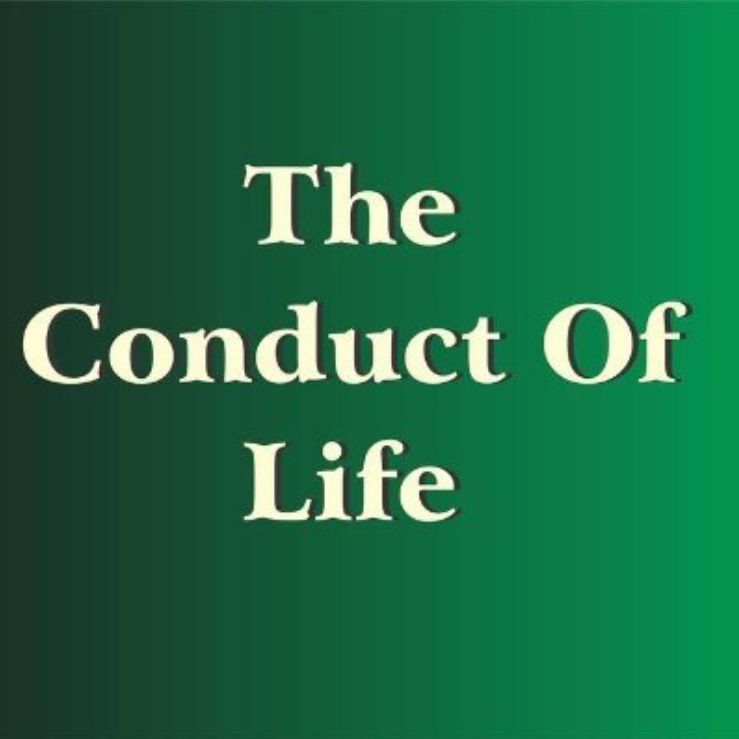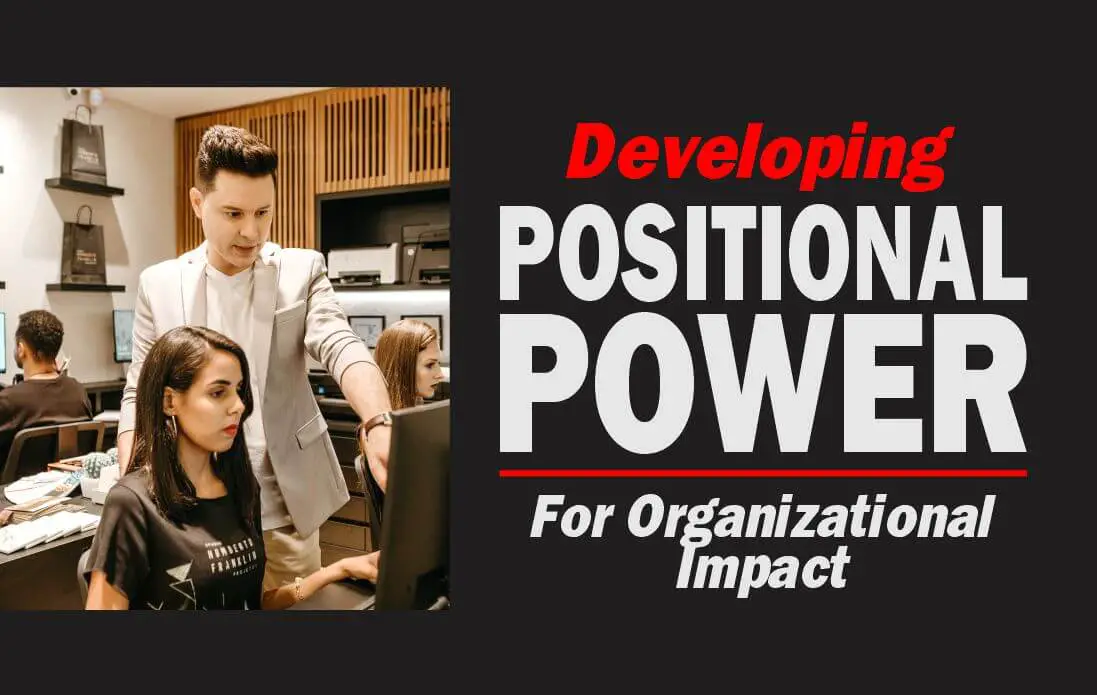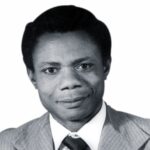Last updated on December 25th, 2024 at 01:49 am
Learn how to use positional power, the capacity to influence others based on your organizational position, to achieve organizational goals.
Developing positional power for organizational impact is an important skill for anyone looking to make a significant impact in their workplace.
It is an important component of leadership and can be used to drive change, motivate teams, and achieve organizational goals.
In this article, we will lay bare, the different strategies for developing this type of power, and how to use it to achieve organizational impact.
Key Takeaways
- Positional power is vital for influencing others based on organizational role or position.
- The distinction between positional and personal power underscores the importance of expertise, charisma, relationships, and authority.
- While positional power offers decision-making authority and influence, overreliance may hinder collaboration and damage relationships.
- Developing positional power requires continuous learning, interpersonal skills, and leveraging influence tactics.
Table of Contents
- Key Takeaways
- What is Positional Power?
- Positional Power vs Personal Power
- Limitations and Challenges of Relying Solely on Positional Power
- Sources of Positional Power
- The Impact of Positional Power
- Developing and Building Positional Power
- Overcoming Challenges in Positional Power
- Limitations of the Power of Position
- Frequently Asked Questions
- Conclusion
What is Positional Power?
Positional power is the power of your position and the capacity to wield and influence others with it in your organizational position.
It is a type of power that comes from your formal position, title, or role within a company or institution. Here are the different types of social power.
Related: Different Types of Leadership
Positional Power vs Personal Power

The power of position and personal power are two different types of power that you can possess even though they mimic each other.
Let’s examine the two and how they differ:
Positional Power
Just as we explained in the definition, the power of position is derived from your formal position or role within an organization.
It is tied to the authority and responsibilities associated with that position. It is bestowed by the organization and usually follows a hierarchical structure. Examples include being a manager, team leader, or supervisor.
When the position is taken away, the power goes with it.
Personal Power
Personal power, on the other hand, is not tied to a formal position or authority within an organization. It is based on your personal qualities, characteristics, and abilities.
It is derived from factors such as expertise, charisma, influence, and relationships.
Personal power can be cultivated through qualities such as strong communication skills, emotional literacy, problem-solving abilities, and the ability to inspire and motivate others.
Related: Interpersonal Relationships through the Dynamics of Power

Limitations and Challenges of Relying Solely on Positional Power
While the power of position can be a valuable tool for achieving organizational goals, relying solely on it can have limitations and challenges.
- First, this power can create a hierarchical culture and disempower employees, hindering collaboration and innovation.
- Second, leaders limited by their position may make poor decisions without the necessary expertise, relying solely on positional power.
- Third, changes in structure or leadership can significantly reduce a leader’s influence and power within an organization.
- Lastly, relying solely on this power can damage relationships, create a negative work environment, and lead to a deficit of trust and respect from employees.
Examples of Positional Power
In an organization, there exist diverse forms of positional power that one can wield.
As a proficient team leader, for instance, you can exercise positional, expert, and referent power, depending on your level of influence and expertise.
Here are some of the power of position examples:
- A manager’s ability to reward their employees with pay raises, bonuses, or promotions based on their performance.
- A teacher’s authority to assign grades and determine whether a student passes or fails a course.
- A CEO’s power to make strategic decisions for the entire company and direct the work of their executive team.
- A parent’s ability to ground their child or take away privileges as a form of discipline.
- A police officer’s legal authority to detain, arrest, or issue citations to citizens who are breaking the law.
Sources of Positional Power

The power of position originates from various sources within an organization as you can see below:
- Legitimate Power: This is power derived from your formal position or authority within the organizational hierarchy. It is based on the belief that those in higher positions have the right to exert influence and make decisions.
- Reward Power: This power comes from the ability to provide rewards or incentives to others in exchange for desired behavior or outcomes. More on the power of reward.
- Coercive Power: Coercive power is based on the ability to administer punishments, penalties, or negative consequences for non-compliance or undesirable behavior. More on the power of coercion.
- Information Power: This power is derived from having access to valuable or critical information that others need or desire. More on the power of information.
- Expert Power: Expert power is gained through possessing specialized knowledge, skills, or expertise in a particular domain. More on the power of expertise.
- Connection Power: Connection power is derived from a person’s network of influential people. It involves having influential connections or the ability to leverage relationships with key individuals or groups to accomplish goals or gain support.
The Impact of Positional Power
The power of position is a critical component of leadership, but its impact extends far beyond the person in the position of authority.
Here are some of the effects of this type of power:
1. Influence and Decision-making Authority
Positional power allows leaders to influence others, make decisions, and drive change.
However, relying solely on this power can have limitations and negative consequences, such as damaging relationships and creating a negative work environment.
2. Organizational Dynamics and Power Relationships
Positional power in organizations influences power dynamics, culture, and values.
Leaders with authority shape organizational culture.
This hierarchical structure may hinder creativity and innovation, so leaders must put it first – building relationships, collaboration, and improving employees for long-term success.
Also Read: Understanding The Balance Of Control of Power in Relationships
3. Effect on Team Dynamics and Productivity
Positional power has a significant impact on team dynamics and productivity.
While it can create accountability and drive performance, relying solely on it may weaken trust and respect.
Developing and Building Positional Power

The power of position is not something that can be achieved overnight. It requires skills, including building expertise and credibility, developing interpersonal skills, and leveraging influence tactics.
Here are strategies for developing this type of power:
1. Building Expertise and Credibility
Building expertise and credibility through education, training, and experience is essential for developing positional power.
Continuous learning and seeking mentorship can help leaders gain respect and trust from colleagues.
2. Developing Interpersonal Skills
Interpersonal skills, including effective communication, relationship-building, and inspiration, are essential for developing positional power.
By focusing on emotional intelligence, active listening, empathy, and building relationships with colleagues, leaders can achieve success and earn trust and respect.
3. Leveraging Influence Tactics
Leaders can improve their power of position by using influence tactics like persuasion and negotiation, along with different types of power like legitimate and expert power, to achieve organizational goals.
By focusing on building relationships and understanding colleagues, leaders can increase their success.
Overcoming Challenges in Positional Power
Of course, every power comes with challenges of resistance, consistency and more. Let’s examine them in detail:
1. Addressing Resistance to Change
Embrace change by understanding and addressing resistance as a leader.
Induce open communication, listen to team concerns, empathize with emotions, explain rationales, engage in dialogue, and clarify misconceptions.
Involve the team, inspire acceptance, and turn resistance into an opportunity for growth through collaboration and shared understanding.
2. Dealing with Power Struggles and Conflicts
Power struggles and conflicts are an inherent part of any organizational dynamic.
When faced with these challenges, it’s essential to approach them with a focus on resolution and collaboration.
Acknowledge conflicts from different perspectives. Understand underlying interests.
Encourage open dialogue in a psychologically safe environment.
Mediate and negotiate towards win-win solutions considering the concerns of all stakeholders.
3. Managing Diverse Perspectives and Interests
In a position of power, you’ll encounter a barrage of dissenting perspectives and interests.
Make use of this diversity as a strength, recognizing that varied viewpoints can lead to richer solutions.
Create a welcoming space for all voices, welcome diverse perspectives, prioritize fairness and transparency, make decisions in line with the organization’s goals and values, and be open to compromise.
Limitations of the Power of Position
Power of position, despite its authority and influence, has certain limitations that you should be aware of.
Let’s take a look:
- Limited Scope: The influence and decision-making abilities of positional power are typically confined to their specific roles in an organization and may not extend beyond that designated scope.
- Dependence on Formal Authority: It is dependent on the formal authority granted by the organization. It may not necessarily reflect the person’s competence or expertise.
- Resistance and Compliance: People may comply with this power out of fear of consequences or the desire to maintain their employment or status. However, this compliance may not translate into true engagement, commitment, or creativity.
- Limited Influence on Informal Networks: The power of position may have limited influence on informal networks and relationships within an organization. Informal networks often play a significant role in decision-making and communication.
- Lack of Flexibility: This power can sometimes limit flexibility and agility in responding to changing circumstances or adopting innovative approaches.
- Perception of Self-Interest: People may view persons with the power of position as being primarily driven by self-interest or organizational politics.
Frequently Asked Questions
What is referred to as positional power?
It is an authority based on one’s title or role in an organization, allowing them to influence others’ actions and decisions.
What does it mean to have position power?
Having the power of position means leveraging your authority to direct, guide, and make decisions that impact others within the organizational hierarchy.
What are the three sources of position power?
The three sources of positional power are legitimate power, reward power, and coercive power.
What is positional power and its role in public administration?
In public administration, positional power is crucial for officials to make decisions, enforce policies, and manage resources effectively, maintaining order and achieving organizational goals.
Conclusion
Developing positional power within an organization is crucial for achieving significant impact and influence.
By gaining the authority and resources needed to make strategic decisions and drive change, leaders can effectively guide their teams towards success.
Building relationships, sustaining trust, and demonstrating competence are key elements in establishing and maintaining positional power.
By leveraging this power thoughtfully, you can create a positive organizational culture and drive long-term success for their teams and the organization as a whole.
References:
- Insideout Mastery: Personal vs Positional Power: How to Use Both to Create Meaningfully
- 5 Sources of Power in Organisations
- RegendEdu: Why the positional leadership perspective hinders the ability of organizations to deal with complex and dynamic situations
Pyo Merez (PsyD) is a distinguished adolescent and adult psychologist at the forefront of mental health advocacy.
With expertise in cognitive and developmental psychology, focusing on social relationships, cultural contexts, and individual differences, Pyo has dedicated his career to empowering adolescents and adults.
As a sought-after speaker and panelist, Pyo shares invaluable insights on issues affecting young people, contributing to a deeper understanding of mental health and well-being in today's society.


